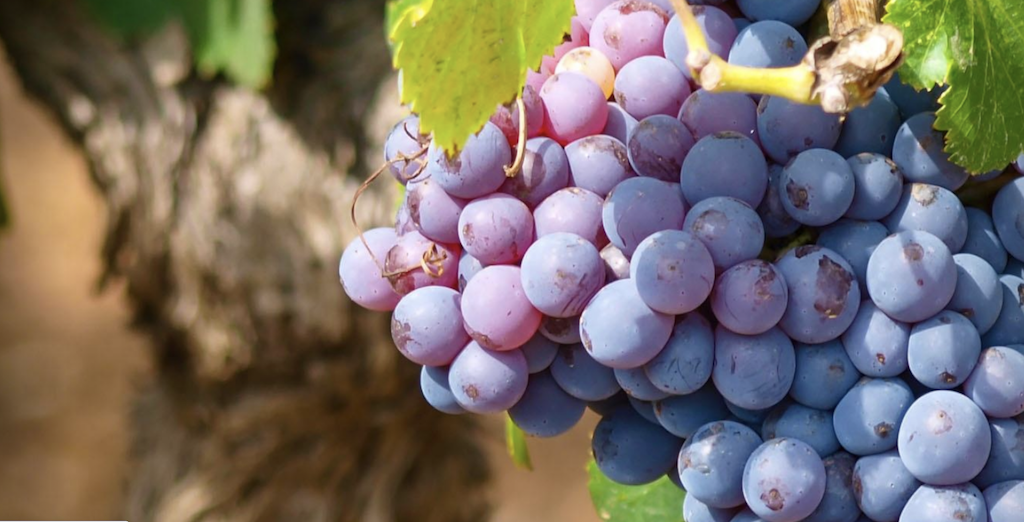It Tastes Like…What?
Getting vocabulary homework as a student often is akin to corporal punishment. But getting vocabulary homework as a wine-loving adult is like sitting by the fire with a warm fuzzy blanket. Because like any industry, we have our own lingo. And you want to be familiar with some of the words the pros use… barnyard, really?
While there are legitimate definitions to many of these words, the best descriptors are your own. You may describe a fruity wine differently than your BFF, and that’s OK, as long as you consistently describe that flavor the same way so you can develop your own palette and preferences. And the only way to add to your vocabulary is to keep drinking Zin!
Aroma or bouquet: The smell of a wine; bouquet applies particularly to the aroma of older wines. Some aromas associated with wines include fruits, herbs, flowers, earth, grass, tobacco, butterscotch, toast, vanilla, mocha, and chocolate.
Balance: If someone tells you the wine is balanced, you can bet it’s going to be darn good. That means the alcohol, acidity, tannins, sweetness and the fruit are all in harmony. So it’s not too sweet, not too dry and the alcohol doesn’t burn the back of your throat.
Body: The apparent weight of a wine in your mouth, which is usually attributable principally to a wine’s alcohol. You can classify a wine as light-bodied, medium-bodied, or full-bodied.
Closed: When a wine is closed it means it’s just not ready to drink. People often may its “tight” as well. It’s either too young and needs more time to age in the bottle or maybe it just may require a little decanting so that the air can get in and loosen it up.
Creamy: You get that creamy, buttery taste from the oak barrels the wine sits in. It’s a taste or just the way the wine feels in your mouth, smooth.
Crisp: A wine with refreshing acidity. Acidity is more of a taste factor in white wines than in reds. White wines with a high amount of acidity feel crisp.
Dry: In winespeak, dry is the opposite of sweet. You can classify the wine you’re tasting as either dry, off-dry (in other words, somewhat sweet or semisweet), or sweet.
Earthy: Earthy wines can smell of mushrooms or truffles, like the forest floor, think leaves and dirt. And some people describe this taste as green vegetables. This is ironically a positive attribute — especially in older wines.
Field blend: Planting a few vines of additional varietals – Petite Syrah, Alicante Bouchet, Carignane – co-mingled with Zinfandel in the vineyard. The grapes are harvested along with the Zinfandel clusters, crushed and blended together.
Finish: The impression a wine leaves in the back of your mouth and in your throat as you swallow it (an aftertaste). In a good wine, you can still perceive the wine’s flavors — such as fruitiness or spiciness — at that point.
Flavor intensity: How strong or weak a wine’s flavors are. Flavor intensity is a major factor in pairing wine with food, and it also helps determine how much you like a wine.
Fruity: A wine whose aromas and flavors suggest fruit; does not imply sweetness. You smell the fruitiness with your nose; in your mouth, you “smell” it through your retronasal passage.
Hang time: The amount of time grapes stay on the vine to ripen before harvest
Head- trained / Head-pruned: An old European style of pruning that trains the vine in the shape of a goblet. It requires no wires or other complex trellis systems. Head pruning spreads the fruit uniformly along the vine and allows light penetration
Minerality: We’ll admit this word often is used as a catchall. It’s used to describe the aroma, the taste or sometimes both. But think of minerality as the smell and even the taste of wet rocks. Or the smell of the sidewalk the next time it rains. It’s not fruity nor is it herbaceous.
Oaky: A wine that has oak flavors (smoky, toasty), often resulting from storage in oak barrels either during or after fermentation.
Old vines: Generally understood to mean a vine that is more than 50 years old and that produces less than three tons per acre.
Soft: A wine that has a smooth rather than crisp mouthfeel. Soft wines typically have a low amount of acidity.
Tannic: A red wine that is firm and leaves the mouth feeling dry. Tannins alone can taste bitter, but some tannins in wine are less bitter than others. Depending on the amount and nature of its tannin, you can describe a red wine as astringent, firm, or soft.
Vinifera: The species name of the European grape vine used in wine production in the United States. It is different from the rupestis or labrusca species that are among the species native to the United States. Vinifera varieties produce much better fruit for fine wine production.
